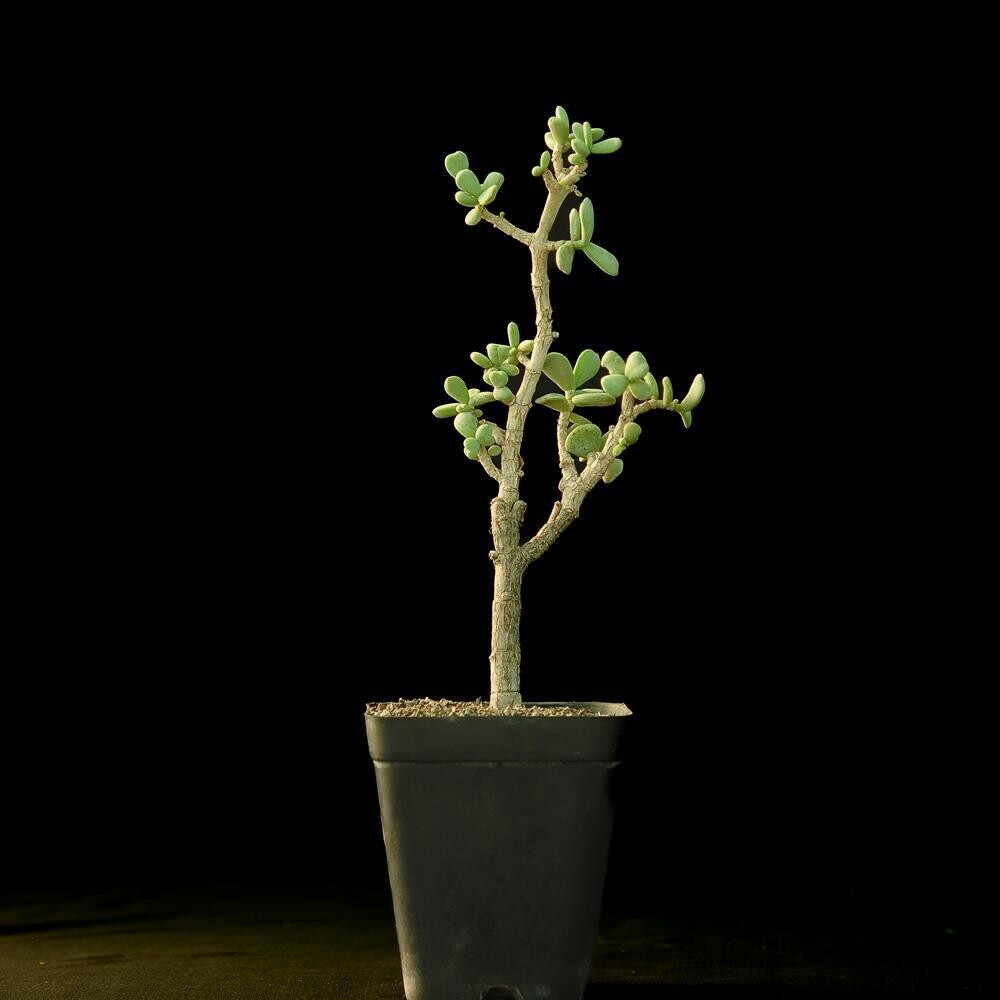Please check the Shipping Updates Page for information on shipping.
Ceraria pygmea
This has been grafted on Portulacaria.
Origin of Name
The genus name "Ceraria" is derived from the Latin word "cera," meaning wax, which could refer to the waxy texture of the plant's leaves or its potential use in traditional cultures. The species name "pygmaea" comes from Greek, meaning "dwarf" or "pygmy," highlighting the plant's notably small stature. Together, Ceraria pygmaea literally means "the dwarf Ceraria," a fitting name for this compact succulent.
Technical Description of Plant
Ceraria pygmaea is a miniature succulent that forms dense clusters of tiny, green to blue-green leaves arranged in a rosette pattern. The plant rarely exceeds a few inches in height, making it an exquisite choice for small container gardens or miniature succulent displays. The leaves are succulent, oval to spoon-shaped, and may have a slight waxy coating, helping the plant conserve water. Ceraria pygmaea blooms with inconspicuous, small yellow flowers that add a subtle charm to its appearance. Its growth habit and size make it an interesting specimen for collectors seeking unusual succulents.
Origin of Plant
Ceraria pygmaea is native to the arid regions of southern Africa, where it is adapted to growing in rocky crevices and sandy soils. Ceraria pygmaea is found near Grootderm in the northern Richtersveld in Namaqualand (Cape Province, South Africa) and across the Orange River to south of Luderitz in Namibia.
Conservation Status
As of the latest assessments, Ceraria pygmaea does not have a widely recognized conservation status, but like many native plants of arid regions, it could be susceptible to threats such as habitat loss and climate change. Sustainable cultivation in gardens and nurseries is essential for preserving this and similar species, allowing enthusiasts to enjoy these plants without impacting their natural populations.
Care Instructions
Ceraria pygmaea thrives in bright, indirect sunlight but can tolerate direct sunlight in cooler climates. It prefers well-draining sandy or gritty soil, typical for succulents, to prevent root rot. Water sparingly, allowing the soil to dry completely between waterings, and reduce watering in the winter to simulate its natural dormant period. This plant is not frost-tolerant and should be protected from cold temperatures, making it suitable for indoor cultivation in temperate regions. Fertilize lightly with a diluted succulent fertilizer during the growing season to support its health and growth.
